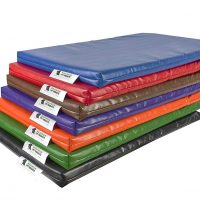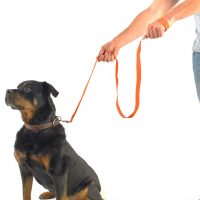We all know that dogs don’t come fully trained, but when they’ve just chewed up that new pair of shoes or the remote control it can still be very frustrating. Your dog doesn’t know what they should or shouldn’t chew on… so ultimately it all comes down to the right training and environment.
Why do dogs chew?
Initially, it’s important to know why dogs chew in the first place. There can be a number of factors – ranging from the age of the dog to the environment that they live in – but these are some of the most common reasons why dogs chew destructively:
- Puppy teething: Dogs between the age of 3-7 months are going through the teething stage. Much like a baby, they seek relief by chewing on whatever they can find to soothe the pain. Chewing also allows the puppy’s teeth to fall out, making way for their adult teeth.
- Adolescent teething: Between 7-12 months, dogs receive their adult teeth. These are harder and thicker, so cause a considerable about of discomfort. During this time dogs are prone to chewing, so it helps to have chews (not toys) around the house to help alleviate the pain.
- Boredom: When a dog is left alone, they get bored. If you leave your dog alone for the vast majority of the day, ensure that they are taken out for a long walk in the morning and evening to expel some of their energy and keep boredom at bay.
- Attention seeking: If you don’t give your dog a good amount of attention throughout the day (e.g. regular walks, playing with them, giving them toys) they may develop a bad habit of chewing something they shouldn’t… just so you’ll get up and chase them around. It’s smart (on the dog’s part) but it’s a habit that, once formed, is really hard to break. A chew-resistant dog bed is also a great idea, as once the dog realises they can’t chew through the specially-coated material, they’ll turn their attention to the toys they can
- Unbalanced diet: Each dog is different, but as a rule you need to take into account the age, weight and health of your dog to ensure that they’re getting all of the nutrients they need. Some dogs take to chewing stones or bricks when they’re not getting enough calcium, which can have bad effects on their teeth. Check with your vet for the optimal diet for your specific breed of dog.
6 tips to stop your dog from chewing
Now that we’ve established why dogs chew, here are some tips to prevent them from destroying your entire house.
- Check for medical issues:
The first thing to do when you get a new puppy or dog it to take them to a vet for a full medical examination. The vet will check their teeth for issues, and ensure that they are not nutrient deficient (which can cause dogs to chew unnecessarily).
- Pay attention:
Whether you’ve got a new puppy or are re-homing an older dog, you have to appreciate that they’re coming into a new and unknown environment. For the first few months at least, treat them as you would a human baby or toddler to protect them (and your house) from harm. It’s important to set boundaries whilst they’re still getting used to their new home so that they don’t develop bad habits. Trust us – no matter how cute they are, it’s better to train them now than wait until they’re bigger and even more boisterous. It’s true what they say, you can’t teach an old dog new tricks. Teach them the rules early-on and it will save you time and hassle in the future.
- Prevent to protect:
By maintaining a tidy, clutter-free environment, you’re automatically cutting down the number of items your dog can chew. It seems obvious, but much like babies, dogs will put anything in their mouths. We’ve all dragged a slipper out of a playful puppy’s mouth, but by nipping these habits in the bud and removing the items all together during this learning stage, they’re less likely to develop the habit. It’s also important to keep kitchen and bathroom cleaning solutions (including fabric conditioner, shampoo, bleach, body creams, washing-up liquid and more) in secure cupboards as chewing these kind of products (and their contents) could be very harmful to your dog.
- Encourage chew toys:
If you dog starts to chew objects around the house, firstly discourage the behaviour and then give them an appropriate toy to chew instead. This teaches then what they should chew, and what they shouldn’t. Once they get the hang of it, ensure that there are plenty of different chewable toys around the house so that they don’t have to turn their attention to the leg of the kitchen table or your favourite cushion.
- Provide the right environment:
You want your dog to have a nice, comfortable place to sleep, but all too often this can become just another thing to chew. Dog beds are one of the most commonly chewed household items, but by investing in a chew-resistant dog bed you are not only saving yourself the hassle of clearing up yet more mess, but it can also serve as a learning experience. Once your dog realises that they are unable to chew through their bed, they should eventually give up and go back to their chew toys. Our chew-resistant dog beds are designed using a dense foam filling under a special coated nylon cover to provide strength, comfort and durability. With no zips or Velcro for them to take hold of and waterproof fabric to wipe-clean any accidents, our beds provide the perfect solution when training your dog not to chew. Available in a variety of colours and sizes, they‘re a great option for the house, office or garden. - Create a routine:
It can be difficult to spend enough time with your dog when you have a job that takes you away from the house all day. However, this is not an excuse for not showing your dog the love they crave and deserve. Many dogs chew out of boredom, but if you create a routine then they will know that you’ll soon be home to take them for a walk/feed them/play with them/let them sit in your lap. Dogs love to bond with humans, so by taking them for walks, ensuring they get a decent amount of playtime and by setting mealtimes at regular intervals, they’ll soon get into a routine and know that you’ll be back to entertain them soon.
Minimise the risks
Even with the very best of intentions, some breeds of dogs simply love to chew. You can do your best and follow all of the tips above, but in reality, it’s hard work. Teaching your dog not to chew every available item in the house takes a long time, so during these training stages it’s important to minimise the risks.
- Remove objects of curiosity that your dog might chew, and limit your dog to certain areas of the house to avoid further damage.
- Provide the right chew toys for your breed of dog. Dog toys such as rasks, dental chews, balls and kongs are great, but make sure that you pick the correct size for your dog.
- Give them a comfortable, durable bed to call their own. Our chew-resistant dog beds not only deter dogs from chewing furniture items, but they’re also easy to clean, meaning you don’t have to worry about muddy paw prints or excess saliva.
- Leave your scent behind whilst you’re out at work by rolling a toy between your hands before you go. This will help with separation anxiety, which can also cause dogs to be destructive.
- Encourage playtime to tire out your dog, leaving them happy to settle down on their bed and relax.
Does your dog struggle with destructive chewing? Give these tips a try and let us know how you get on.
Don’t forget to check out our chew-resistant dog beds, purchased by vets, kennels, dog trainers, farmers and security companies. We’ve sold over 10,000 in the UK to date, and we can even make a bespoke bed to your specifications in our UK-based factory. If your dog is a notorious chewer but you’re not sure that this product is right for you, we’ll send you a free sample (UK mainland only) and you can judge the quality for yourself.





